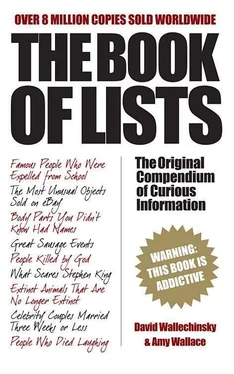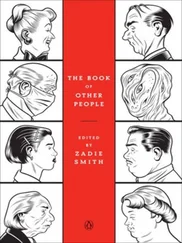HUGH HEFNER (1926–)
It seems appropriate that a man who made his fortune in sex should have done so in bed. For decades, Hefner controlled the Playboy empire from a massive bed in his Chicago mansion, where he stayed awake for 60-hour stretches, fuelled by amphetamines and Pepsi.
– R.W.S. & The Eds
EARLY CAREERS OF 6 SELF-MADE BILLIONAIRES
1. WARREN BUFFETT (1930–)
Growing up the son of a US Representative from Nebraska, Buffett was an energetic paperboy for the Washington Post , covering several routes simultaneously. He also retrieved lost golf balls from a suburban course and sold them. When he was 11 years old, he and his sister began playing the stock market on a modest scale. A year later, he published a horse-racing handicapping sheet, and, while in high school, he and a fellow student were partners in a small pinball machine business that grossed $50 a week.
As a business undergraduate (he earned a BS from the University of Nebraska and an MBA from Columbia), Buffett studied with Benjamin Graham, who taught students to seek out undervalued stocks and wait patiently for them to rise. After Buffett formed his own investment fund, he scored one of his first big coups by following Graham’s advice. In 1963, shares of American Express were selling cheaply because the company, then the victim of a major swindle, was considered near bank ruptcy by many on Wall Street. Buffett, noticing that customers in Omaha shops and restaurants were using their American Express cards just as much as before the scandal had broken, ignored the Wall Street gossip and bought 5 per cent of the company’s stock. Over the next five years, the value of the stock quintupled. Buffett’s fortune has since grown to $42 billion.
2. MICHAEL DELL (1965–)
When he was 12 years old, Dell used the money he earned working at a Chinese restaurant to start a stamp collection. He then made $2,000 re-selling the stamps through mail order. By the time he was 16, he had saved enough money to buy an Apple computer. He used the computer in his next business venture, selling subscriptions to the Houston Post . Reasoning that many new subscribers would be people setting up new households, such as newlyweds, he obtained lists of marriage licence applicants from local courthouses. Then, using the computer, he sent out personalised letters with subscription offers. He earned $17,000, which he used to buy his first BMW.
Dell’s parents wanted Michael to become a doctor. When he entered the University of Texas in 1983, he obliged his parents by enrolling in pre-med courses. But he began a new business on the side — selling computers. Operating out of his dorm room, he bought remaindered IBM and IBM-clone computers from local dealers, upgraded them, and sold them both door-to-door and through mail order. When his parents found out, they were upset and asked him to quit. A compromise was reached: Dell would put his business on hold until he finished the school year; if sales during his summer break weren’t good, he would return to school. During the last month of his break, Dell sold $180,000-worth of computers. He dropped out of college, set up shop in Austin, Texas, and achieved sales of $6 million in his first year. He soon pioneered the concept of ‘direct selling’ to customers, which established computer companies had resisted in the belief that buyers of expensive equipment would not be willing to make a purchase without a hands-on inspection. Dell Computers grew into the third-largest computer seller in the United States and Michael Dell’s net worth is now $13 billion.
3. BILL GATES (1955–)
Gates attended Lakeside School, a private Seattle establishment with rigorous academic standards. In 1967, the school’s mothers’ club used the proceeds of a rummage sale to buy a digital training terminal that was linked by phone to a computer at a local company. Gates was hooked immediately and, with three like-minded friends, formed the Lakeside Programming Group and hung out at the computing centre day and night. Gates and his friends were so enamoured of computers that they rummaged through the rubbish bins at the nearby Computing Centre Corporation (CCC), looking for scraps of paper left by the programmers. After searching for errors in the company’s programs, the group produced a 300–page manual, The Problem Report Book , that landed them on the CCC payroll. Later, the members of the Lakeside Programming Group formed their own company, Traf-O-Data, to sell a traffic monitoring program. Within a year, Traf-O-Data had earned $20,000, but business fell off when customers learned that Gates, the company president, was only 14 years old. During his senior year of high school, Gates was permitted to suspend his studies to accept a position as a programmer for TRW.
In 1975, Gates, who had enrolled at Harvard as a pre-law major, and Paul Allen, a former member of the Lakeside Programming Group who was working for Honeywell, set about designing software programs for the Altair 8800, the first commercially available microprocessor. They contacted the president of MITS, the manufacturer of the Altair, and told him they had successfully adapted the computer language BASIC for the Altair, even though they had yet to begin. When the president asked to see their program, they started working day and night in Gates’s dorm room. Although neither Gates nor Allen had ever seen the Altair 8800 first hand, their program worked and became the industry standard for the next six years. Gates dropped out of Harvard to form Microsoft with Allen. The company was so successful that Gates became a self-made billionaire at 31. He is now the world’s second richest man, worth $46 billion (the world’s richest man is Ingvar Kamprad, Swedish founder of IKEA).
4. STEVE JOBS (1955–)
While he was in high school, Jobs attended lectures at the Hewlett-Packard electronics plant in Palo Alto, California. One day he phoned William Hewlett, the company president, and asked for parts to build a frequency counter for a school project. Hewlett not only complied, he also gave Jobs a summer job.
In college, Jobs teamed up with his future partner in Apple Computers, Stephen Wozniak, to sell ‘blue boxes’ that allowed people to illegally make free long-distance calls. Jobs supplied the parts, Wozniak provided the labour, and they sold hundreds of the devices for $150 each in University of California dorms and through a friend in Beverly Hills. After dropping out of Reed College, Jobs landed a job as a technician at Atari. One of his first tasks was engineering on the computer game Breakout. When Jobs was unable to meet the deadline, he asked Wozniak for help. ‘Steve wasn’t able to design anything that complex,’ said Wozniak later. ‘I designed the game thinking that he was going to sell it to Atari for $700 and that I would receive $350. It wasn’t until years later that I learned that he had actually sold the game for $7,000.’ Jobs used the money he received to travel to India, searching for spiritual enlightenment. Back in the United States, he spent time at an Oregon farm commune. After returning to California in 1975, he met up with Wozniak again and suggested that they start their own computer company. To raise the $1,000 they needed, Wozniak sold his prized HP-65 calculator while Jobs sold his VW van. The Apple Computer company set up shop in the Jobs family garage. Their Apple II was the first computer designed for home use and set off the personal computer revolution. Although Jobs had a contentious relationship with Apple — he was forced out of the company in the late 1980s, then brought back in 1998 — the company remains the centre of his $2 billion fortune.
5. ROSS PEROT (1930–)
Perot got his first job at the age of six, working for his father, a cotton dealer and horse trader, breaking horses to the saddle for a dollar or two apiece. At 12, he worked out a deal with the Texarkana Gazette by which he would establish a paper route in the city’s predominately black slum area and in return would receive 70 per cent, rather than the standard 30 per cent, of subscription fees collected. Setting out on horseback at 3:30 each morning. Perot covered 20 miles a day and was soon earning $40 a week.
Читать дальше












